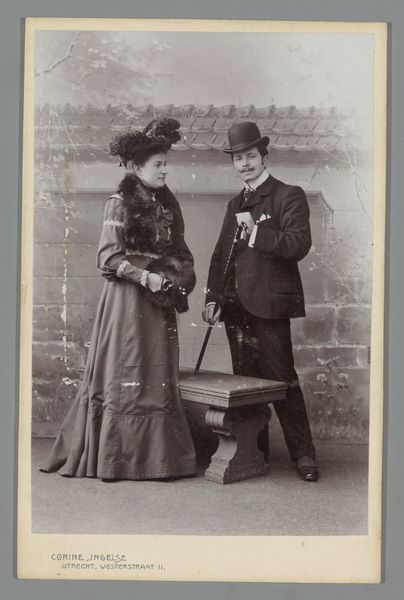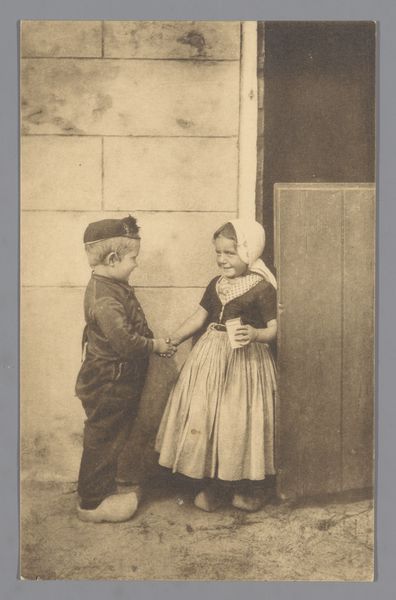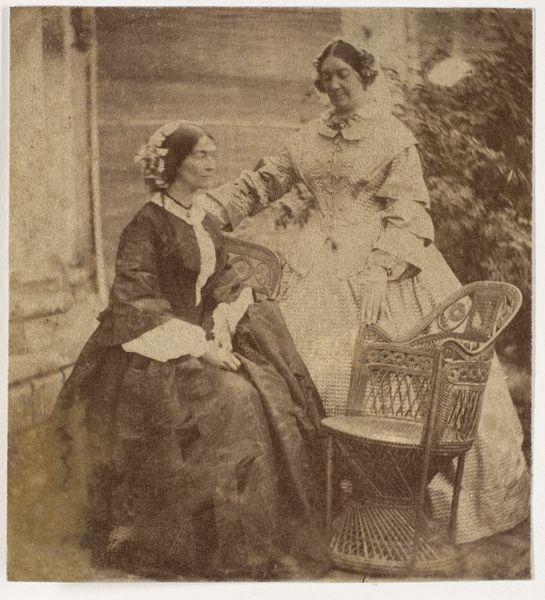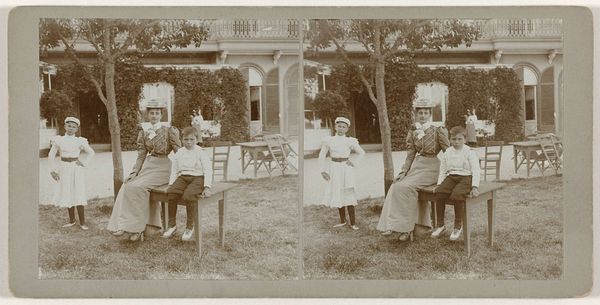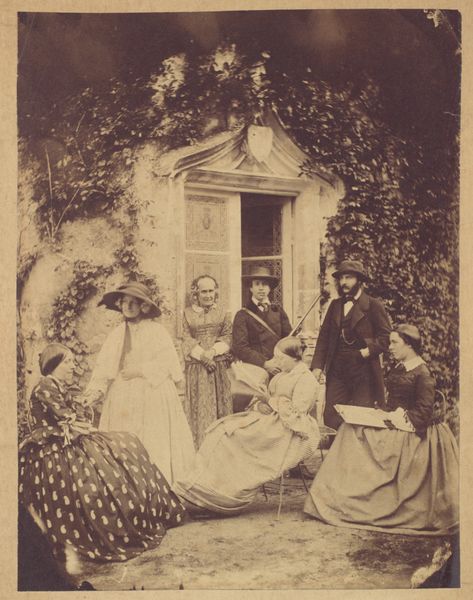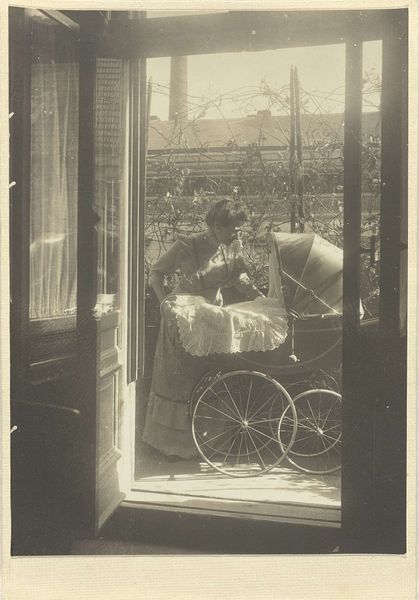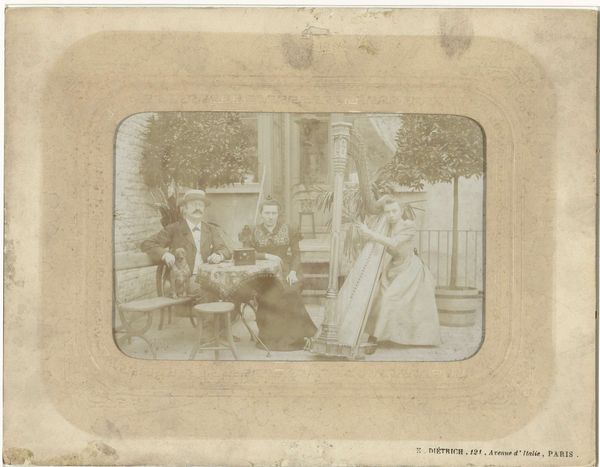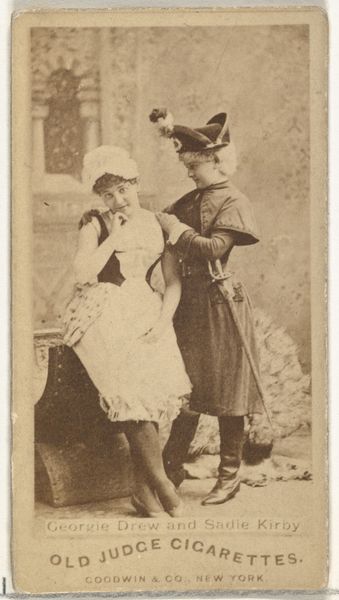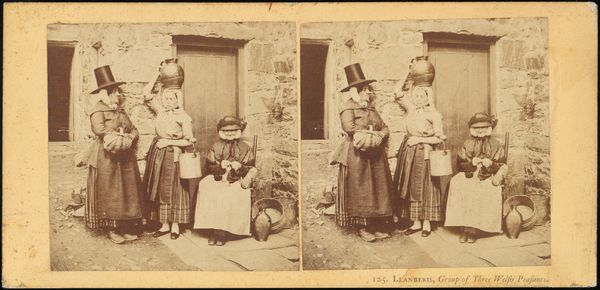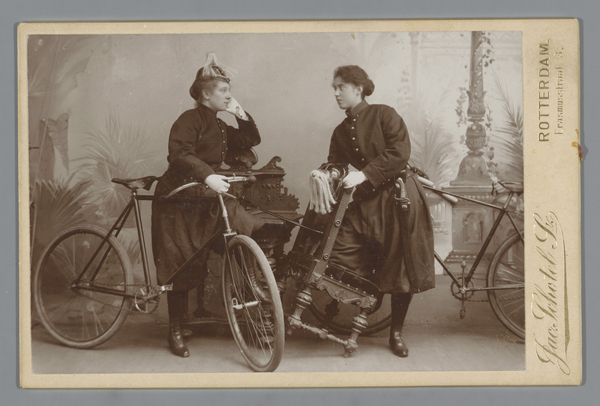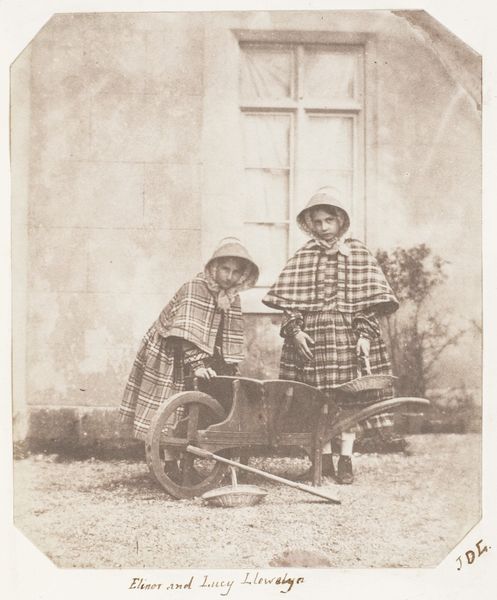
etching, photography
#
portrait
#
culture photography
#
etching
#
photography
#
historical photography
#
19th century
#
genre-painting
#
italian-renaissance
#
watercolor
Dimensions: image/sheet: 25.5 × 19.6 cm (10 1/16 × 7 11/16 in.) mount: 28 × 21.2 cm (11 × 8 3/8 in.)
Copyright: National Gallery of Art: CC0 1.0
Editor: This is "Écrivain Public, Naples" by Giorgio Sommer, created sometime between 1865 and 1870. It’s a photograph, seemingly hand-colored, of a public scribe and his client sitting at a table on the street. It's striking how staged it looks, almost theatrical. What do you see in this piece, from a more critical perspective? Curator: This photograph offers a window into 19th-century Neapolitan society, highlighting issues of literacy, gender, and class. Sommer, though a foreigner, captured the daily lives of ordinary Neapolitans. Consider the woman: what might it mean for a woman of her apparent class to require a public scribe? Her clothing suggests a certain level of affluence. Why can't she write herself? Editor: Maybe she needed someone to write something formal, even if she knew how to write basic things? Curator: Exactly! Perhaps a legal document, a love letter adhering to specific conventions, or correspondence with someone of higher social standing. The "Écrivain Public" wasn’t just about literacy, but about navigating a complex social structure. Look at the scribe's attire compared to hers, it creates such a social division, don’t you think? Editor: Yes, he looks almost comically poor in contrast to her elaborate dress. Curator: It's a potent visual representation of the access to power. Who could afford this service and whose voices went unrecorded? How does this image speak to current discussions around representation and who gets to tell their stories? Editor: I never considered it as a document of inequality. It really reframes how I see photography from that era! Curator: It’s about understanding that even seemingly simple images are steeped in historical and social power dynamics. Thinking critically about those power structures can reveal so much more.
Comments
No comments
Be the first to comment and join the conversation on the ultimate creative platform.
